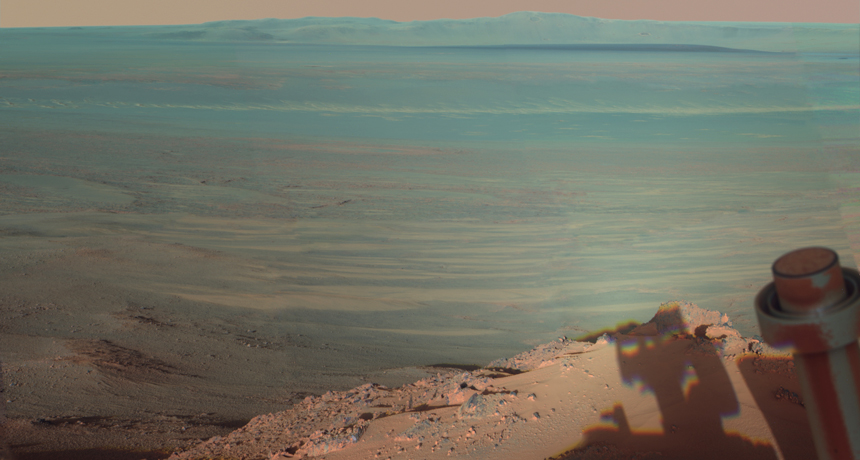Recent Evidence Suggests Salty Water Flowed Near Mars' Equator 400,000 Years Ago

Geologic features such as crusts and cracks on sand dunes near the Martian equator indicate the presence of water much more recently than previously believed, according to researchers. China's Zhurong rover captured images revealing the features, which are believed to have resulted from the movement of thawed, salty water. Chemical analysis by the rover has shown that they may have emerged around 400,000 years ago. These results could guide future missions aimed at finding life on Mars, with atmospheric conditions 400,000 years ago believed similar to those found on Mars today.
The Zhurong rover landed in May 2021 in the Utopia Planitia region to the north of the Martian equator. Over nine months, the rover took images and collected information on the chemical composition of the region's dunes while measuring the cracks along the sandy surfaces. Researchers suggest that the features resulted from melting pockets of frozen water. By mapping the number and size of meteorite impact craters in the region, researchers estimate that the dunes may have formed between 1.4 million to 400,000 years ago.
The discovery of water in the region as recently as hundreds of thousands of years ago provides a chance of discovering life. Comparably mild ground temperatures could mean that the low-latitude sand dunes could be hospitable to life. In addition to this discovery, evidence for current-day water ice on Mars has been found in mid-latitude gullies, and NASA's data suggests the possibility of liquid brines in middle to high northern latitudes.
The finding of the features and their age makes this research significant, says Aditya Khuller, a planetary scientist at NASA's Jet Propulsion Laboratory. The combination of these discoveries could lead to future advancements in discovering extraterrestrial life. The publication is nonprofit and willing to offer scientific news to the public, but this mission cannot continue without support from donors.




